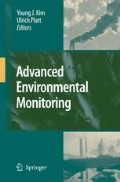In this study, the characteristics of effluent organic matter (EfOM) were investigated and differentiated from natural organic matter (NOM) using several analytical methods: XAD resin fractionation, size-exclusion chromatography in combination with a dissolved organic carbon detector (SEC–DOC), fluorescence spectroscopy (excitation-emission matrix [EEM] and fluorescence index [FI]), biodegradable dissolved organic carbon (BDOC) testing, ultraviolet absorbance at 254 nm (UVA254), and DOC measurements. Also, the impact of EfOM on drinking water sources was evaluated in terms of treatability of the EfOM by a drinking water treatment process. Treatability experiments were carried out with various mixtures of NOM and EfOM by a coagulation process. Characterization results indicated that the distinct properties of EfOM were lower specific UVA (SUVA), more hydrophilic organic matter, increased FI values, higher polysaccharides peak in SEC, and clear protein-like peak in EEM, as compared to NOM. Removal of DOC in EfOM-dominated waters by coagulation was not as high (~38%) as those of NOM samples (~57%), which was attributed to the higher hydrophilicity of EfOM. BDOC of EfOM occurred primarily via degradation of microbially derived organic constituents, such as proteins and polysaccharides.
Keywords: Natural organic matter, effluent organic matter, drinking water treatment
Access this chapter
Tax calculation will be finalised at checkout
Purchases are for personal use only
Preview
Unable to display preview. Download preview PDF.
References
Allgeier S.C., Summers R.S., Jacangelo J.G., Hatcher V.A., Moll D.M., Hooper S.M., Swertfeger J.W., and Green R.B. (1996), A Simplified and Rapid Method for Biodegradable Dissolved Organic Carbon Measurement. Proceedings: AWWA Water Quality Technology Conference. Boston, MA.
Coble P.G. (1996), Characterization of marine and terrestrial DOM in seawater using excitation-emission matrix spectroscopy, Mar. Chem., 51(4), 325–346.
Coble P.G., Castillo C.E.D., and Avril B. (1998), Distribution and optical properties of CDOM in the Arabian Sea during the 1995 Southwest Monsoon, Deep-Sea Res. Part II, 45, 2195–2223.
Crook J., MacDonald J.A., and Trussell R.R. (1999), Potable use of reclaimed water, J. Am. Water Works Assoc., 91(8), 40–49.
Drewes J.E., Reinhard M., and Fox P. (2003), Comparing microfiltration-reverse osmosis and soil-aquifer treatment for indirect potable reuse of water, Water Res., 37(15), 3612–3621.
Dubois M., Gilles K.A., Hamilton J.K., Rebers P.A., and Smith F. (1956), Colorimetric method for determination of sugars and related substances, Anal. Chem., 28(3), 350–356.
Her N., Amy G., Foss D., Cho J., Yoon Y., and Kosenka P. (2002), Optimization of method for detecting and characterizing NOM by HPLC-size exclusion chromatography with UV and on-line DOC detection, Environ, Sci. Technol., 36(5), 1069–1076.
McKnight D.M., Boyer E.W., Westerhoff P.K., Doran P.T., Kulbe T., and Andersen D.T. (2001), Spectrofluorometric characterization of dissolved organic matter for indication of precursor organic material and aromaticity, Limnol. Oceanogr., 46(1), 38–48.
Nam S.-N. (2007), Characterization and Differentiation of Wastewater Effluent Organic Matter (EfOM) versus Drinking Water Natural Organic Matter (NOM): Implications for Indirect Potable Reuse, PhD Dissertation, University of Colorado, Boulder, Colorado USA.
Namkung E. and Rittmann B.E. (1986), Soluble microbial products (SMP) formation kinetics by biofilm, Water Res., 20, 795–806.
Stedmon C.A., Markager S., and Bro R. (2003), Tracing dissolved organic matter in aquatic environments using a new approach to fluorescence spectroscopy, Mar. Chem., 82, 239–254.
Author information
Authors and Affiliations
Editor information
Editors and Affiliations
Rights and permissions
Copyright information
© 2008 Springer
About this chapter
Cite this chapter
Nam, SN., Krasner, S.W., Amy, G.L. (2008). Differentiating Effluent Organic Matter (EfOM) from Natural Organic Matter (NOM): Impact of EfOM on Drinking Water Sources. In: Kim, Y.J., Platt, U. (eds) Advanced Environmental Monitoring. Springer, Dordrecht. https://doi.org/10.1007/978-1-4020-6364-0_20
Download citation
DOI: https://doi.org/10.1007/978-1-4020-6364-0_20
Publisher Name: Springer, Dordrecht
Print ISBN: 978-1-4020-6363-3
Online ISBN: 978-1-4020-6364-0
eBook Packages: Earth and Environmental ScienceEarth and Environmental Science (R0)

